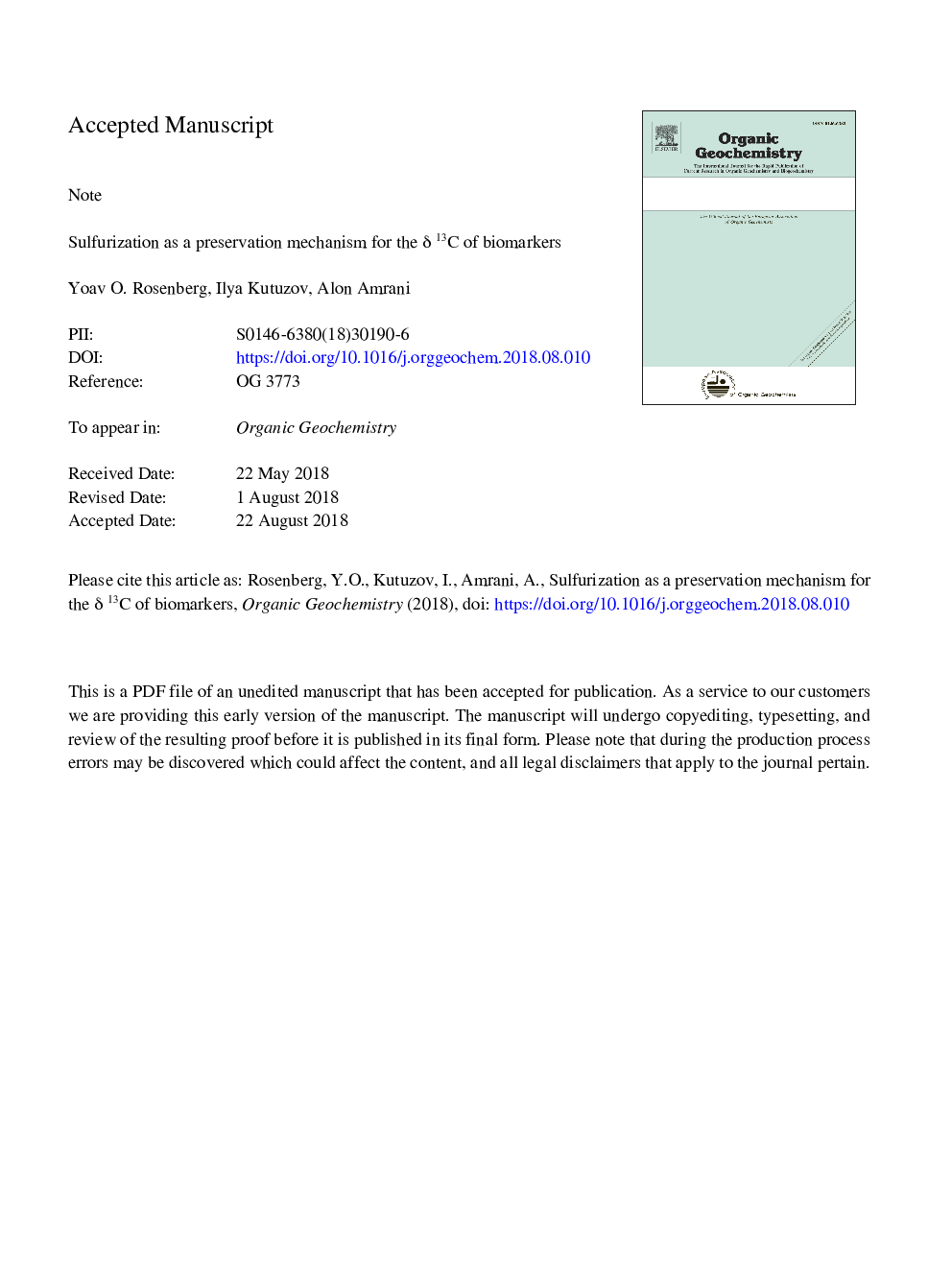| Article ID | Journal | Published Year | Pages | File Type |
|---|---|---|---|---|
| 10141366 | Organic Geochemistry | 2018 | 12 Pages |
Abstract
We compiled data from studies that examined pairs of compound specific δ13C in both the free- and S-bound fractions of sedimentary organic matter. The studies compiled span a wide range of biomarker type, rock age (â¼235â¯Ma to 3â¯kyr) and paleo-environments in which the sedimentary organic matter was deposited. Despite this variability, majority of data shows that the S-bound fraction is heavier on average by 2â° compared with the free HC. The hypotheses of different biological sources and fractionation during sulfurization or maturation of the organic matter are reexamined in light of this result. We conclude that the δ13C fractionation between these two fractions should be a result of a more generalizing mechanism, operating at an early diagenetic stage. Fractionation during biodegradation of the free biomarker fraction can offer such a mechanism. Thus, the S-bound fraction may better represent the original δ13C values of biomarkers used in paleoenvironmental studies. Future studies should confirm this suggested mechanism.
Keywords
Related Topics
Physical Sciences and Engineering
Chemistry
Organic Chemistry
Authors
Yoav O. Rosenberg, Ilya Kutuzov, Alon Amrani,
